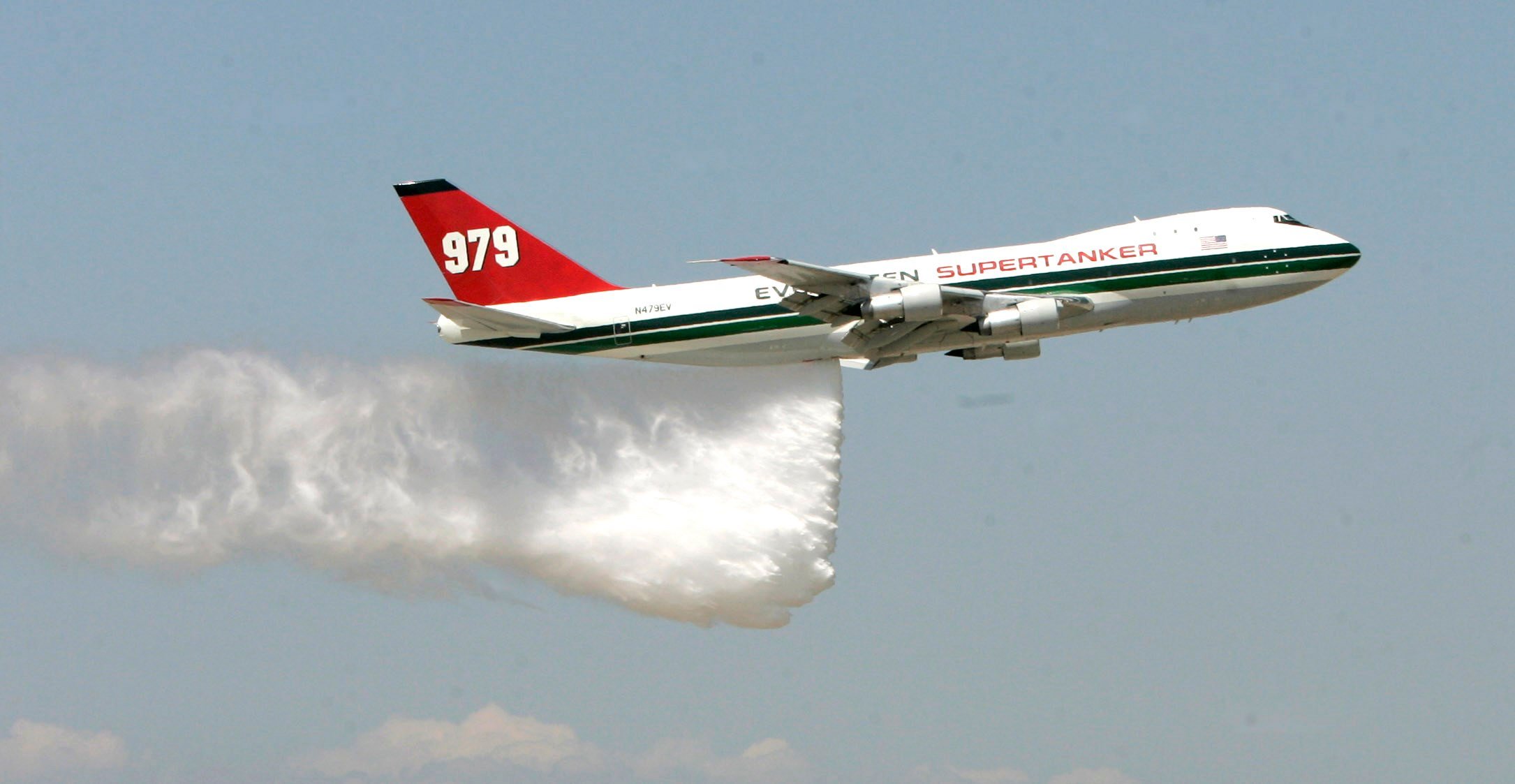Aviation
The world’s largest Aerial firefighting tanker will shortly land in colorado spring (USA).

COLORADO SPRINGS: Global SuperTanker Services, LLC announced the agreement Wednesday 12th august 2015 at the Colorado Springs Airport. Colorado Springs will serve as the new operating base for the Boeing 747-400 aircraft to be the fastest, longest-range and most effective aerial firefighting platform in the world.
The President of Global SuperTanker Service LLC, Jim Wheeler says the new SuperTanker is bigger and better than before. “What we have done is taken the old systems and we’re renovating and modernizing some of it,” he says. “Putting it in a 747-400 to provide a 19,600 gallon aerial firefighting tanker.”
One of those improvements is the ability to carry more than one firefighting agent at once. “We can put gel on a structure to prevent fire from catching that structure then come back and paint a retardant line,” Wheeler said. “Or we can do a water drop to tamp down a fire while we come back and put a retardant line on it.”

It has the capability to fight fires any where in the world, but it will live in our backyard. “These folks are going to be a big player in fighting that nemesis,” said Colorado Springs Mayor John Suthers.
The plane is expected to be completed later this year, and operational next year.
The Global SuperTanker company says they chose the Colorado Springs airport because of its infrastructure and central location. It’s business that the airport hopes will translate into other aspects of operations.
Source : the denver channel , koaa
History of super tanker
The Evergreen Supertanker was a Boeing 747-100 widebody  aircraft that was modified into an aerial firefighting aircraft by Evergreen International Aviation. The aircraft was originally manufactured by Boeing in 1971 for Delta Air Lines. With a capacity of 20,500 US gallons (77,600 liters), it was the largest aerial firefighting aircraft in the world. It served for 4 years (2009 – 2013) and presently Evergreen Supertanker Stored at Marana Pinal Airpark. USA.
aircraft that was modified into an aerial firefighting aircraft by Evergreen International Aviation. The aircraft was originally manufactured by Boeing in 1971 for Delta Air Lines. With a capacity of 20,500 US gallons (77,600 liters), it was the largest aerial firefighting aircraft in the world. It served for 4 years (2009 – 2013) and presently Evergreen Supertanker Stored at Marana Pinal Airpark. USA.
The Evergreen Supertanker is equipped with a pressurized liquid drop system, which can disperse retardant under high pressure or drop retardant at the speed of falling rain. This system allows the aircraft to operate within its design criteria.Using the pressurized system, the aircraft can deliver retardant to the scene of a fire while flying at a height of 400 to 800 feet (120–240 m), at approximately 140 kn (260 km/h, 160 mph), configured as if it were on approach for landing. it can fly at speeds of around 600 mph (970 km/h; 520 kn) during cruise.
Source : Wikipedia
liked it ..! ?
Share with your friends and families

Aviation
COMAC Unveils Plans for the C929 to Rival Airbus and Boeing

After the success of China’s first C919 aircraft, the country is setting its sights on developing a larger plane. COMAC (Commercial Aircraft Corporation of China) has officially confirmed plans to build a widebody aircraft, marking a significant step in its aircraft lineup.
Traditionally, Airbus and Boeing dominate the widebody aircraft market, with decades of expertise in developing planes and engines capable of carrying heavy payloads. China, which currently relies on imported engines, is now aiming to challenge these giants with its own widebody jet, the C929, designed to compete with the Airbus A350 and Boeing 777.
American Airlines Is Looking for Flight Attendants: Apply Now
The C929 will be China’s first independently developed long-range widebody aircraft. It adheres to international airworthiness standards and boasts independent intellectual property rights. The baseline version is designed to seat 280 passengers and offers a range of 12,000 kilometers, catering to global demand for both regional and international air travel.
Russia, which also needs reliable narrowbody and widebody aircraft, could become a key customer for the C929. Additionally, China plans to target the broader Asian market as it continues to expand its aviation capabilities.
Close Call at Heathrow: BA Flight Narrowly Escapes Drone Collision
China’s aviation progress includes the ARJ21 (now called C909), a regional jet with 100 seats for shorter routes, and the C919, a narrowbody jet with 180 seats designed to rival the Boeing 737 MAX and Airbus A320. Both models have found increasing demand in the domestic market.
At China’s largest air show in Zhuhai, COMAC announced that Air China will be the launch customer for the C929 widebody jet, though details about order size and delivery timelines were not disclosed.
Other major deals announced by COMAC include:
- Hainan Airlines: Firm orders for 60 C919 and 40 C909 regional jets.
- Colorful Guizhou Airlines: 30 C909 jets, with 20 firm orders and 10 provisional agreements.
The C929, renamed from the CR929 after Russia withdrew from the joint development project in 2023, is expected to carry 280–400 passengers with a range of 12,000 kilometers, competing directly with Boeing’s 787 Dreamliner.
According to COMAC’s deputy general manager, Tong Yu, the first fuselage section of the C929 is expected by September 2027, with prototype test flights anticipated soon after.
-

 Aviation2 months ago
Aviation2 months agoMicrosoft Flight Simulator Raises $3 Million to Bring Back the An-225 Mriya
-

 Airlines2 months ago
Airlines2 months agoQantas Engineers Stage Walkout Over Cost of Living Concerns
-

 Airlines2 months ago
Airlines2 months agoQatar Citizens Can Travel to the United States Without a Visa
-

 Aviation2 months ago
Aviation2 months agoQatar Airways bans these new Electronic Devices on plane
-

 Airlines2 months ago
Airlines2 months agoJapan Airlines Rolls Out Free Domestic Flights to International Passengers
-

 Defence2 months ago
Defence2 months agoWhich Country Has the Largest Fleet of Fighter Aircraft?
-

 Airport2 months ago
Airport2 months agoWestern Sydney Airport Welcomes Its First Plane After 6 Years of construction
-

 Aviation2 months ago
Aviation2 months agoDid you know ? Once Boeing 747 carried 1088 passenger in 1991








